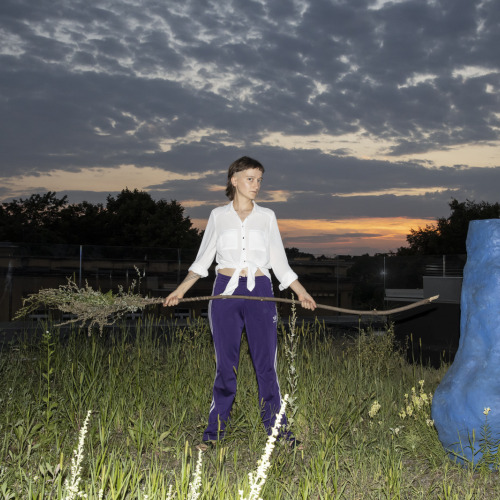
Schüttehausproject (Schüttehouse Project)
“Schüttehausproject / Schuettehouse project displays
a powerful political and deeply artistically engaged position that
re-frames, indeed, the anti-fascist resistance politics against the German
national consensus in Carinthia,
Austria. The
authors, Eva Egermann, and Christina Linortner, connect brilliantly
politics at its purest (anti-fascism, (anti-)communism)
with politics of representation that question spaces, structures and
institutions in which knowledge of history is generated and memory codified. And this is something
that should deeply affect contemporary thought about history in Slovenia,
too.” (Marina Gržinić)
Originally
created as a publishing house for the communist weekly newspaper Volkswille, the Schüttehouse was designed by Austria’s
first woman architect, Margarete Schütte-Lihotzky (1897-2000) in 1948.
Construction began just four years after she herself had been freed
from a Nazi prison.
After completing her architecture studies, Margarete
Lihotzky became involved in the resettlement movement, and thus became familiar
with the living conditions and problems of Vienna’s working classes, as well as
perceived the misery of the masses that had resulted from unresolved
existential problems. Her work can be seen in the context of contemporary ideas
of modernism, massive social reforms and a desire to create a new social order.
In 1930 she went to Moscow
to build houses for children and new industrial cities. In 1940, Margarete
Lihotzky decided to return to Austria
and join the anti-fascist resistance movement. After the war she resumed her
work as an architect with strong political commitments.
Located
at Südbahngürtel 24 in the southern Austrian city of Klagenfurt (known as Celovec to the Slovenes) the house, today known
as Volkshaus / Ljudski Dom (People’s
House), is used as a community facility by Carinthian Slovenes, the IKUC Intercultural
Center, as well as
the so-called Balkan Klub.
˝The Schüttehouse
Project is about a marginalised history that
has disappeared from collective memory and our everyday lives. It is also about social struggles in
the Second Republic of Austria, the biography of a communist architect and an
anti-fascist resistance heroine, a Germanic nationalist consensus in Carinthia,
as well as the memory of architecture, and its future potential to become a
museum to the struggle against fascism.˝ (Eva Egermann & Christina
Linortner)
The Schüttehouse Project
also encompasses interviews entitled Nach der
Freiheit... (Towards Freedom...) published as a supplement to MALMOE
magazine. Interviews with activists of the
antifascist resistance movement in Austria (Ana Zablatnik & Lonki
Schellander, Fritz Probst, Irma Schwager, Hans Landauer, Irma Trksak) address
issues of governance, rebellion and uprising in relation to everyday life in a
current neoliberal system that seems to have no alternatives.
Organisation: City
of Women
In collaboration with: NUK Ljubljana, Revija Borec
With the support of: Österreichisches
Kulturforum Ljubljana


